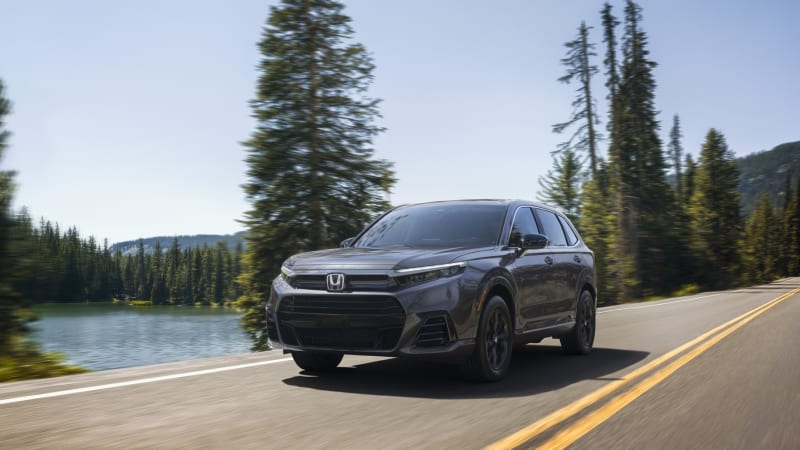2025 Honda CR-V e:FCEV unveiled with hydrogen-electric drivetrain

Honda is returning to the hydrogen-car sector with a fuel-cell-powered evolution of the CR-V. While some companies build hydrogen-electric models to learn about the technology, the Japanese automaker stresses that the CR-V e:FCEV is a regular-production model with a usable amount of driving range running on hydrogen, electricity, or both, and all of the creature comforts that buyers expect to find in a car in 2024.
Design details such as a powertrain-specific front end with a smaller grille and a larger lower air intake help set the e:FCEV apart from the standard CR-V. It’s a similar story inside, where the basic layout is carried over from the sixth-generation model released for the 2023 model year. There’s room for five passengers, which is impressive considering the hydrogen-electric drivetrain takes up considerably more space than a four-cylinder engine and a fuel tank, a 10.2-inch digital instrument cluster, and a nine-inch touchscreen for the infotainment system, which is compatible with wireless Apple CarPlay and wireless Android Auto. Heated and power-adjustable front seats come standard.
Honda developed the powertrain jointly with General Motors. The system consists of two hydrogen storage tanks (one under the rear seats and the other under the trunk floor), a fuel cell and an electric motor, both located under the hood, and a 17.7-kilowatt-hour battery pack integrated into the floor. Honda has dabbled in hydrogen technology for over 20 years, and it leveraged this expertise when developing the new system that powers the e:FCEV. It notes that the drivetrain is more durable, more efficient, and less costly to build than its predecessor.
The system sends 174 horsepower and 229 pound-feet of torque to the front wheels; all-wheel drive isn’t available. Honda notes that filling up the tanks with a total of 4.3 pounds of hydrogen returns a maximum driving range of 270 miles. In this configuration, gaseous hydrogen enters the fuel cell, where it reacts with oxygen to create the electricity that drives the wheels. Alternatively, users can plug in the e:FCEV like an electric car to recharge the battery pack and drive for up to 29 miles on electricity alone. Honda argues this setup gives motorists the best of both worlds: They can use the CR-V e:FCEV as an electric car to commute, and they can switch to hydrogen power for longer trips.
Building a CR-V that runs on hydrogen required re-engineering the suspension system and the chassis. Engineers increased rear lateral rigidity by 10%, increased rear torsional rigidity by 9%, and fitted the model with specific springs, dampers, and stabilizer bars on both ends.
Made in Marysville, Ohio, the CR-V e:FCEV will be available later in 2024. There’s a catch: You won’t be able to buy one, as it will only be distributed through lease plans. There’s another catch: The model will initially only be offered in California. Honda hasn’t revealed when (let alone if) drivers in other states will be able to lease one, but it clarified that it plans to invest a substantial amount of resources into hydrogen technology in the coming years. It notably sees applications in the commercial trucking, construction, and space exploration sectors.



